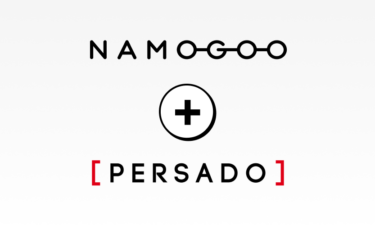Bonus Material: How to Capture the Pivotal Moments of Conversion Through Customer Intent
Conversion rate optimization (or CRO) is crucial to eCommerce success.
For most eCommerce teams, the CRO process includes identifying leaks in the conversion funnel, improving cart abandonment rates, and A/B testing elements of the store to understand which variations lead to more conversions of higher value customers.
But most eCommerce teams miss a crucial part of the eCommerce conversion funnel when building their CRO strategies: micro conversions.
Tracking site visitor’s micro-conversion activity is a full-funnel approach to optimizing the customer journey.
In this article, you’ll learn everything you need to know about micro conversions for eCommerce sites so you can take a more strategic, sustainable approach to your optimization efforts.
What Are Micro Conversions?
Micro vs Macro Conversions: The Difference
The Two Types of Micro Conversions
Examples of Micro Conversions for eCommerce
Why Micro Conversions Matter for eCommerce
How to Track Micro Conversions for eCommerce
Set Up a Goal in Google Analytics
Use Your Sales, Marketing, eCommerce or Analytics Software
Increase eCommerce Sales With Micro Conversion Tracking
What Are Micro Conversions?
Micro conversions are small steps users take on the path to conversion. For an eCommerce store, micro conversions include actions such as signing up for an email list, creating an account, or adding items to the cart.
These actions might not directly result in an immediate sale, but those actions are still part of the conversion funnel — and tracking them is critical.
Tracking micro conversion steps can help your eCommerce brand better understand your users, improve your CRO strategy, and drive revenue, sales, and customer retention.
Micro vs Macro Conversions: The difference
Micro conversions are crucial eCommerce metrics to track.
But what’s the difference between macro and micro conversions, and how do you know which one is which?
Macro conversions refer to the final action you want users to take. For an eCommerce company or marketplace, a macro conversion generally refers to a purchase. Macro conversions are what is typically referred to as a “conversion” — so when we say a user “converted,” it usually means they completed an order.
However, that final purchase often doesn’t happen right away or sometimes at all. For example, your site might get 1,000 visitors a day. Before purchasing, those users might sign up for an email list, create a registered account, or ask a question in the review section. These actions are all micro conversions.
Micro conversions are small, incremental steps towards the ultimate conversion action, the macro conversion. They might not be the final act, but they contribute to the end result – sales.
Mess up one of those smaller steps, and your site could lose out on thousands in sales.
The Two Types of Micro Conversions
There are two main types of micro conversions — process micro conversions and secondary micro conversions. Understanding the difference can help you track customers as they move through the funnel and understand what actions impact conversions.
Process micro conversions represent movement towards your primary macro conversion. Monitoring these steps helps eCommerce businesses understand where users are falling off and what UX improvements to make. Examples include viewing a specific page (such as a category page or contact page) or using the search bar.
Secondary micro conversions are not your site’s primary goals, but they are desirable actions that indicate a future macro conversion. Examples might include Tweeting about your company, asking a question on a Facebook ad, or commenting on a blog post. These steps indicate the user is interested but isn’t quite ready to convert. You may need to nurture them or provide more information to help develop their customer intent
Read More: Customer Purchase Intention: Definition, Why (+ How) to Measure & Convert
It’s important to understand both types of micro conversions and the actions your customers take along the customer journey.
Tracking process micro conversions is simple and can be done with most analytics tools. However, monitoring secondary micro conversions often comes down to social listening.
Examples of Micro Conversions for eCommerce
Since micro conversions are the small steps users take on their path to making a purchase and they can vary drastically by site, industry, and even customer type.
With a B2B company like Namogoo customer Upwork for example, the macro conversion is hiring talent on their platform. This is how the company earns revenue: through a percentage of the freelancer fees paid.
But the micro conversion actions include reading blog content, creating an account, browsing a category, reviewing a freelancer’s profile, or scheduling a call with their enterprise team.
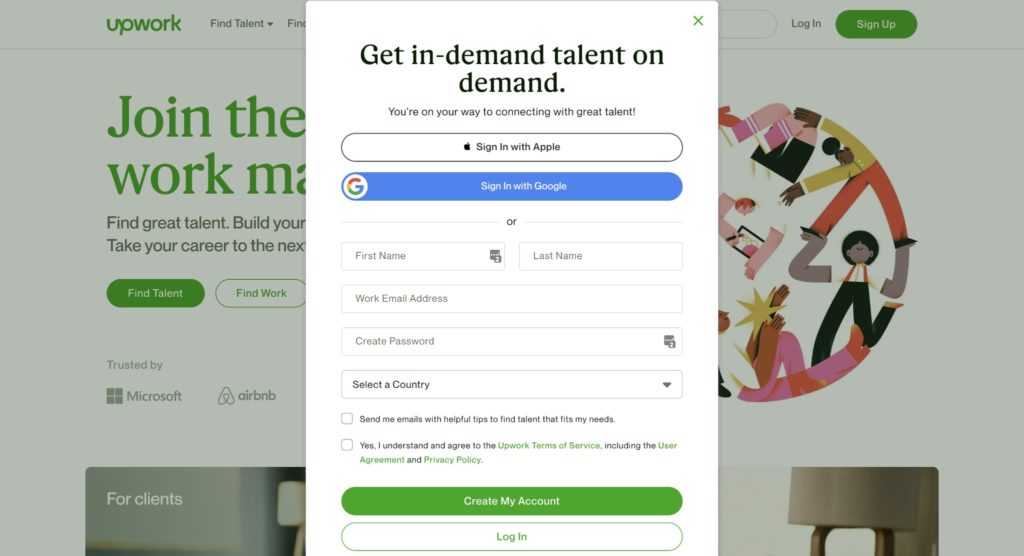
Those are actions users are likely to take before hiring and paying talent.
As mentioned, in eCommerce, the macro conversion is almost always completing an order. So the micro conversions include any desirable action that works toward that ultimate goal on the conversion path.
For example, one of the micro conversions Zulily optimizes for is email sign-ups. The entire shopping experience is gated with an email form:
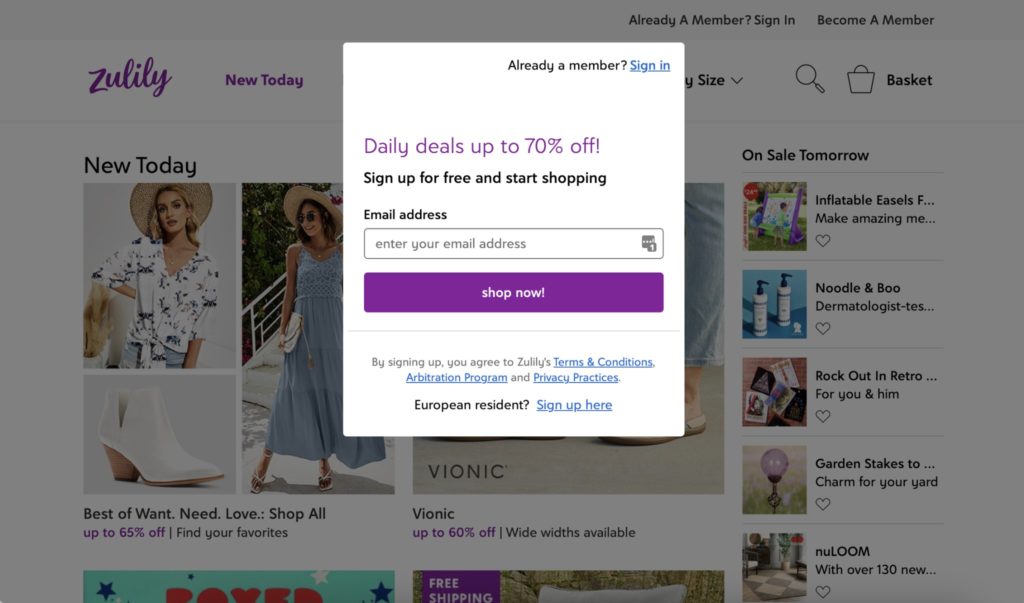
Athletic apparel brand Lululemon’s macro conversion is someone placing an order. But they might also track account creations, email opens and clickthroughs, site searches, or social shares — all steps a user might take before buying a pair of leggings.
Micro conversion can vary by the customer segment as well. For example, pet supply company Chewy offers one-time sales and an auto-ship option. A micro conversion for an auto-ship customer might be to learn more about their auto-ship options.
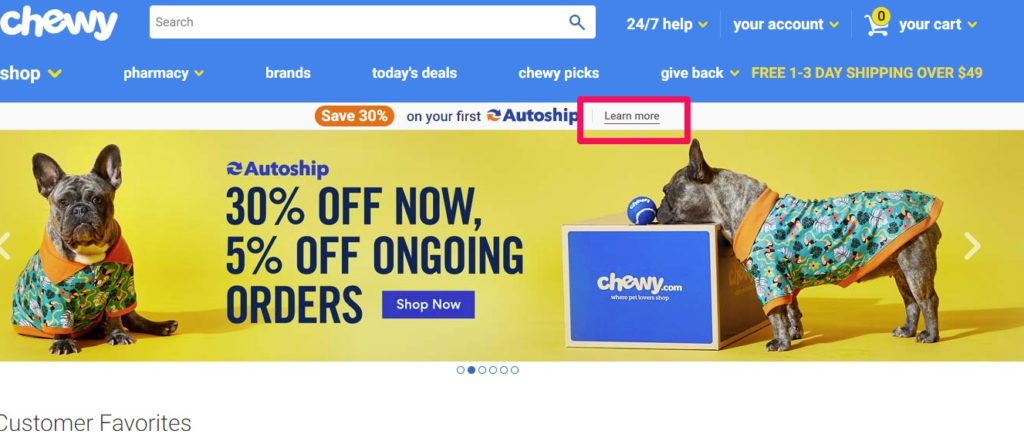
A micro conversion for ad hoc buyers might be viewing “today’s deals” or sign up for the email list.
Here are other examples of micro conversions for eCommerce websites:
- Consume some content
- Subscribe to a newsletter
- Add an item to their cart
- Viewed a product
- Click “read more” on a product description
- Read reviews
- Take a quiz
- Download a lead magnet
- Subscribe to an RSS feed
- Follow or like a social media profile
- View two or more pages on a website
- Watch a video
- Subscribe to push notifications or SMS
- Share content on social media
- Share a product on What’s App or Messenger
- Site search
Some sites might weigh micro conversions differently. For instance, a micro conversion that indicates a high customer purchase intent, such as searching for a product page, might carry more weight than a brand interaction, such as liking a post on social media.
Read More: Customer Purchase Intention: Definition, Why (+ How) to Measure & Convert
Why Micro Conversions Matter for eCommerce
The majority of your eCommerce site traffic won’t make a purchase — especially not immediately in their first session.
Tracking micro conversions helps you better understand how users interact with your brand online and how they move through the conversion process.
If you only pay attention to macro conversion (sales, in most cases), you could be missing out on signals about what matters to your audience and what drives them to make purchases.
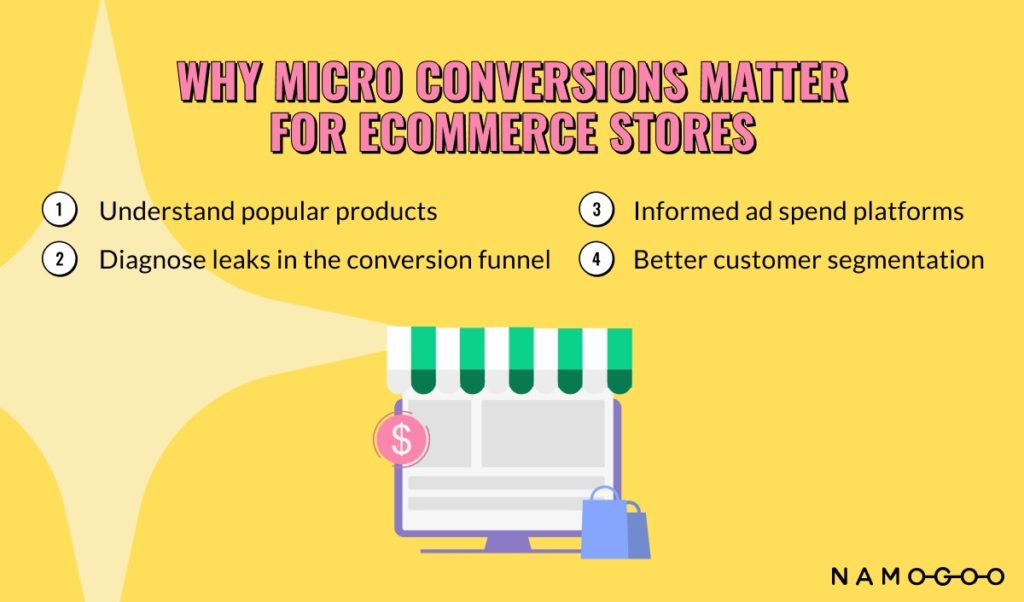
Micro conversions can help you:
- See what types of products your customers are most interested in: Tracking product page views can show you what types of products your customers care about so you can focus on promoting your most popular items.
- Find weak links in the conversion process: For example, if a large number of customers add an item to their digital shopping cart but don’t check out, then it might be time to focus on improving your cart abandonment rate.
- See which social platforms are most popular with your audiences: Tracking Instagram story views and Facebook comments can help you understand where to focus ad spend.
- Segment your customers: Tracking user actions can improve behavioral segmentation and overall customer segmentation. For example, if you know email subscribers spend an average of $100 more than Instagram followers, you can focus your efforts on your email list.
Conversions don’t happen in a vacuum. Each conversion is the cumulation of dozens of steps. Paying attention to micro conversions provides crucial data about your customers and your conversion process.
How to Track Micro Conversions for eCommerce
Tracking micro conversions is a pretty straightforward process for most eCommerce sites. Below, we’ll cover what tools you can use to track them. First, however, you must decide which micro conversions are most beneficial.
Decide Which Micro Conversions To Track
The first step is to determine what types of micro conversions you want to track.
Start by looking at the sales process. What are your most profitable customers, and what actions do they take before conversion? Make a list of the steps in the conversion process.
For example, your conversion process might look like this:
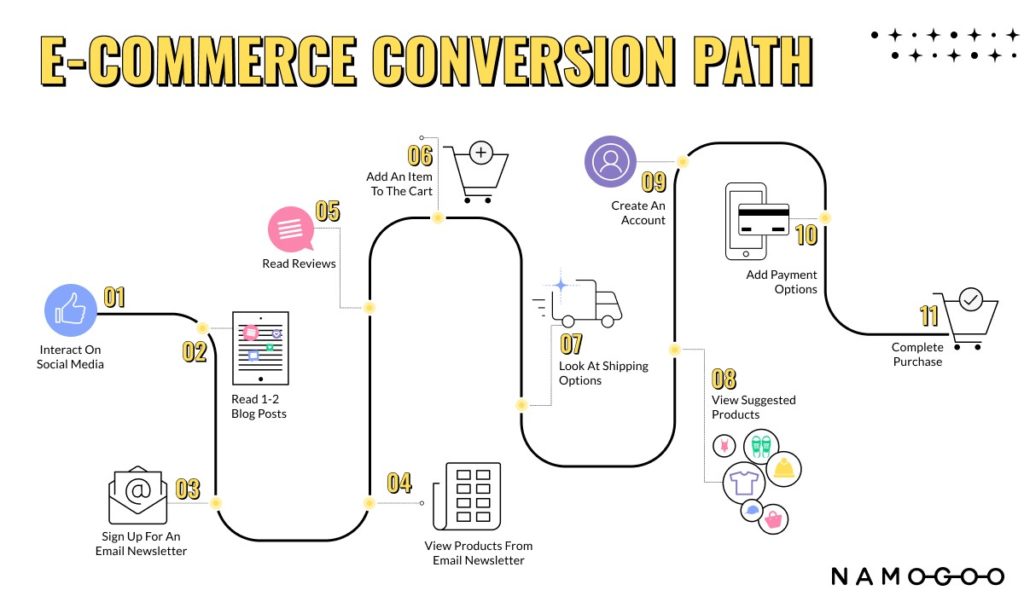
- Interact on social media (Like, comment, or share)
- Read 1-2 blog posts.
- Sign up for an email newsletter.
- View products from email newsletter.
- Read reviews.
- Add an item to the cart.
- Look at shipping options.
- View suggested products
- Create an account.
- Add payment options.
- Complete purchase.
The macro conversion is completing a purchase — but that happens after 10 other interactions with your brand. Small brands may choose to only track micro conversion most likely to result in a sale, such as adding a product to their cart, adding payment method or creating an account. If you have limited bandwidth, those may be enough.
Sites with more resources should track each micro conversion in the process. This data can improve revenue by uncovering where users leave the funnel.
For example, if 1,000 people sign up for your email newsletter yet only two users click on your product links from emails, then you’d want to take a deeper look at your email marketing campaigns.
Tracking these micro conversions along the customer journey can help your team improve revenue by allowing you to understand what drives shoppers to convert and providing it to them.
Once you know what you want to track, it’s time to set up a tracking process. Here are three ways to track micro conversions.
Set Up a Goal in Google Analytics
Google Analytics’s Goals feature is one of the simplest ways to track micro conversions. You can add each micro conversion step as a goal and then view actions in the Conversion report. After you set up goals, you can track each step right in your GA dashboard.
Here’s how:
- Login to your Google Analytics Account. Make sure you have set it up to track on your website.
- Choose the correct website if you have more than one.
- In the left-hand panel, click “Conversions” then “Goals.”

- Click “Overview,” then “Set up goals.”
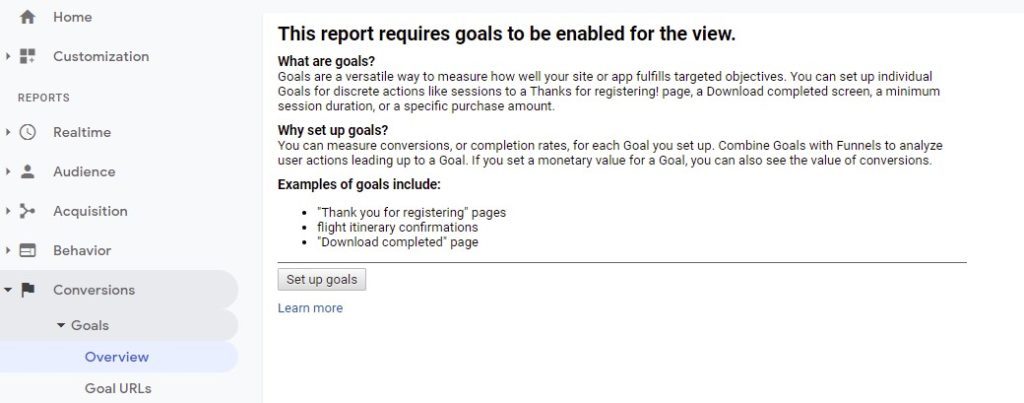
- Set up the parameters for your goal.
- Now you can track micro conversion in Google Analytics.
Depending on the micro conversion you want to track, you may need to use additional methods, which we’ll cover below.
Note: You can also use Google Events to track micro conversions. The process is similar to Goals, but the results are displayed in the Behavior report rather than Conversions.
Use Your Sales, Marketing, eCommerce or Analytics Software
eCommerce platforms almost always allow you to track micro conversions, though the ones that they track aren’t comprehensive.
For example, Shopify tracks micro conversions that happen on and through their platform, like Adds to Cart and Page Views, but not those from off-platform apps and softwares like Email Subscriptions.
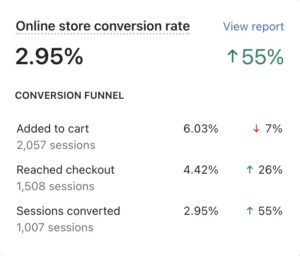
Most analytics softwares allow you to track micro conversions. For example, Active Campaign can track goals throughout the sales funnel, as does Salesforce. WordPress users can use features in some plugins to track conversions.
Email marketing platforms, social media platforms, and landing page tools generally have features to track goals and conversions — and most can be used to track micro conversions as well.
The problem with using these platforms over Google Analytics is you can end up tracking goals in three, four, or five different platforms — which can get confusing with multiple micro conversions.
Consider integrating tools with GA and setting up tracking there to keep it all in one place.
To gain a more comprehensive understanding of your website visitors activity and to track micro conversions that Google Analytics is unable to report on, consider using heat mapping and behavioral analytics tools like Hotjar.
Use UTM Codes
If you are tracking micro conversions based on links, such as blog post clicks or ebook downloads, you can use UTM codes to track micro conversions.
UTM codes add a short snippet of code to the URL that allows sites to track the number of clicks and see where the traffic came from. For example, if you want to see how many users read a blog post from a Facebook post, you can use a UTM code.
Here’s what they look like:

Google Analytics has a UTM builder for campaigns or you can use a stand-alone tool like UTM Builder.
Increase eCommerce Sales With Micro Conversion Tracking
Micro conversions are crucial to optimizing your eCommerce conversion process, but many companies ignore their potential.
By tracking users throughout the process — rather than just the final event — you’ll better understand what pushes your customers to click “Buy.”







